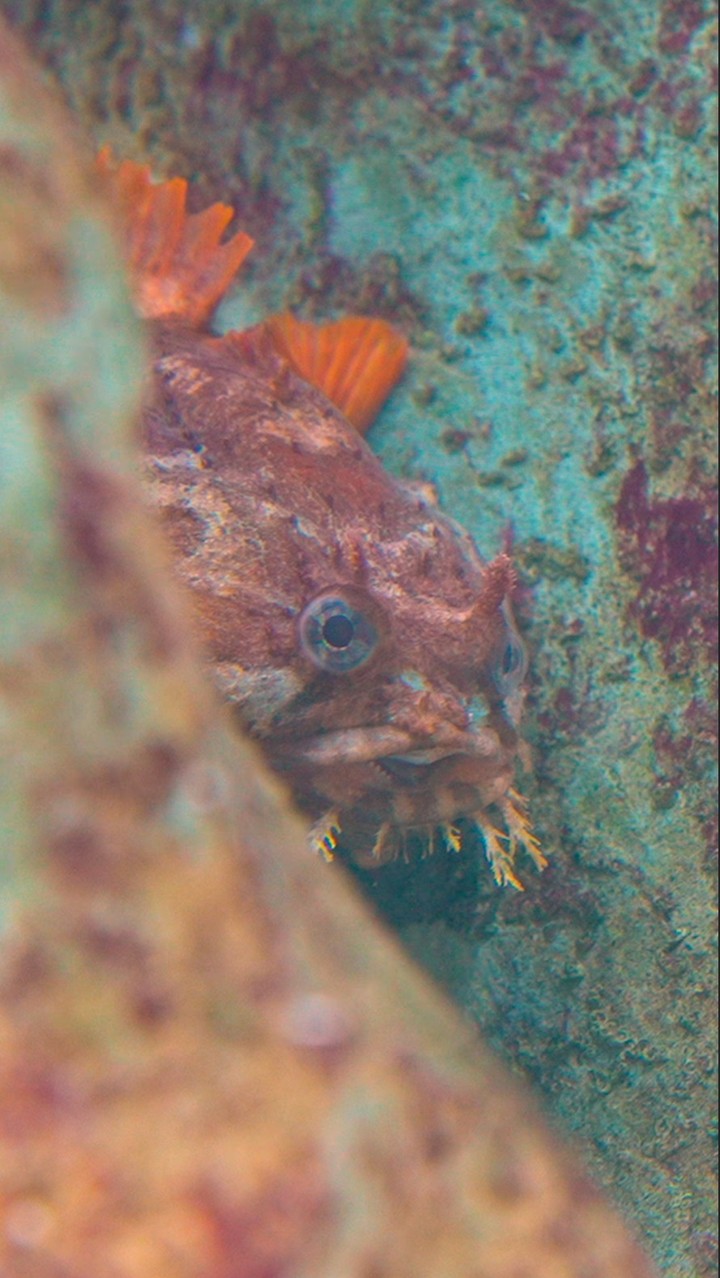– The distinct vocalizations of the gulf toadfish and their role in mating behavior
– Anatomical and behavioral adaptations of the gulf toadfish to its marine environment
– The ecological significance of the gulf toadfish and its place in the marine ecosystem
– Gulf toadfish conservation status and human impacts on their populations
– Observational tips for locating gulf toadfish in their natural habitat
Among the diverse and fascinating creatures that inhabit our oceans, the gulf toadfish, Opsanus beta, is an extraordinary species that captures the attention of marine biologists and wildlife enthusiasts alike. As we commemorate World Frog Day, this fish evokes a certain amphibian charm, not for its appearance but for the unmistakable vocalizations it produces, sounds akin to the croaking grunts one attributes to toads. These sounds are crucial as they play a significant role in courtship, with males emitting these calls to allure potential mates.
The gulf toadfish belongs to the Batrachoididae family, a group known for their remarkable vocalization ability. Residing primarily in the Gulf of Mexico, this fish has evolved a range of unique adaptations that allow it to thrive in its benthic, often murky domain. Alongside its signature sound, the toadfish has a robust, flattened body designed for a life spent mainly along sandy bottoms and amid seaweed patches. Their camouflage is exceptional, blending seamlessly with their surroundings to evade predators and ambush prey.
This fish is a bottom feeder, targeting small invertebrates and crustaceans who find themselves unlucky enough to wander within its swift and decisive ambush attack. Gulf toadfish have evolved a unique feeding mechanism; they use negative pressure to vacuum up food, showcasing a swift and efficient method of intake that befits their sedentary lifestyle.
Gulf toadfish inhabit shallow waters, rarely venturing into depths exceeding a few meters. Their habitat preference includes areas where seagrasses, rocks, and debris provide ample cover and feeding opportunities. They possess an extraordinary capability to endure variable oxygen levels and even survive temporarily out of water, a testament to their physiological resilience.
Marine ecosystems are intricate webs of interdependence, and the gulf toadfish is a key link within these. By controlling populations of the smaller organisms they consume, they maintain a critical balance among community dynamics. Additionally, they serve as prey to larger fish and marine mammals, integrating into the broader marine food web.
Although not currently listed as threatened or endangered, the gulf toadfish, like many marine species, faces pressures from human activities. Coastal development, pollution, and overfishing of their habitat pose significant threats. Conservation efforts must, therefore, involve monitoring these factors and ensuring that their coastal environments are protected and preserved.
For those hoping to witness the gulf toadfish in its natural setting, patience and a keen eye are required. Visiting areas known for seagrass beds and rocky crevices during low tide can increase the chances of a sighting. Observers should listen for the characteristic grunting sounds as these could lead to discovering a male toadfish in its prime, engaged in its unique mating call.
The Gulf toadfish is an entrancing species that garners attention not just for its idiosyncratic communication methods but also for its particular lifestyle and the role it serves in the undersea landscape. Studies on the Gulf toadfish contribute significantly to our understanding of marine life and the importance of conserving different species to maintain the health of marine ecosystems.
On World Frog Day, while our amphibious friends of the swamp and woodlands are celebrated, let’s also extend our appreciation to their underwater counterparts and marvel at the wondrous variety of life our planet nurtures, both above and beneath the waves. Keep an eye out—or, more aptly, an ear out—for the gulf toadfish and consider the profound interconnectedness of our natural world, which always deserves our respect and protection.
*****
Source Description
This World Frog Day, meet our gulf toadfish! 🐸🐟🐠
Does this unique-looking fish get its name from the toad-like grunts it makes to attract a mate? This bottom-feeder fish spends much of their time hiding in the sand or seaweed and can survive for some time out of water. Keep your eyes open, and try to spot it on your next visit!

